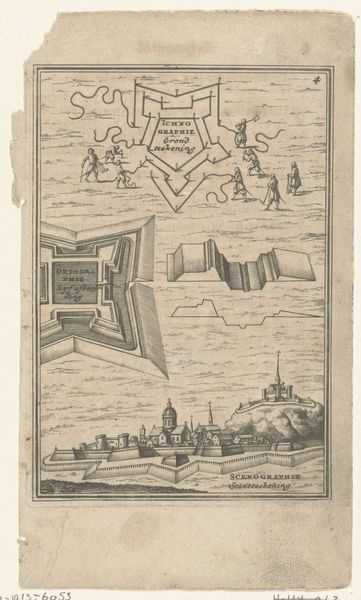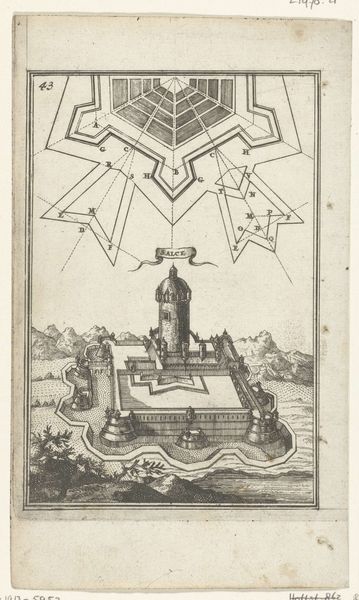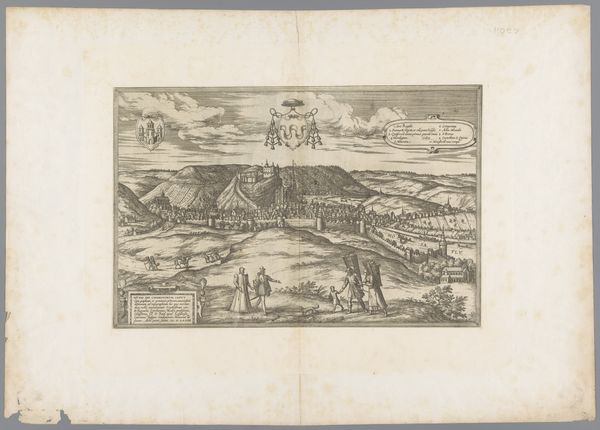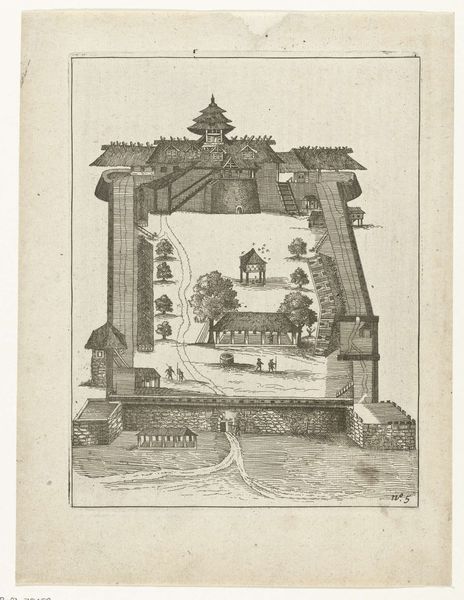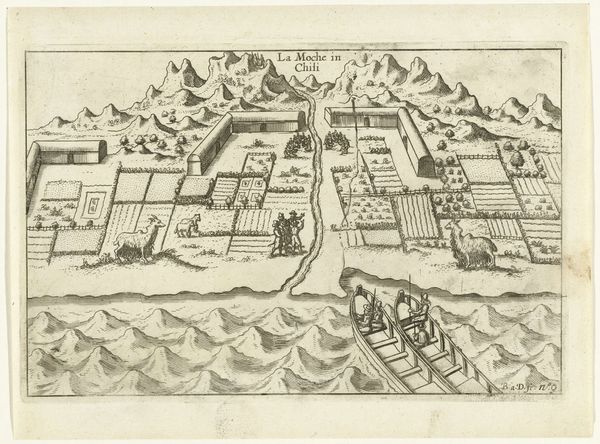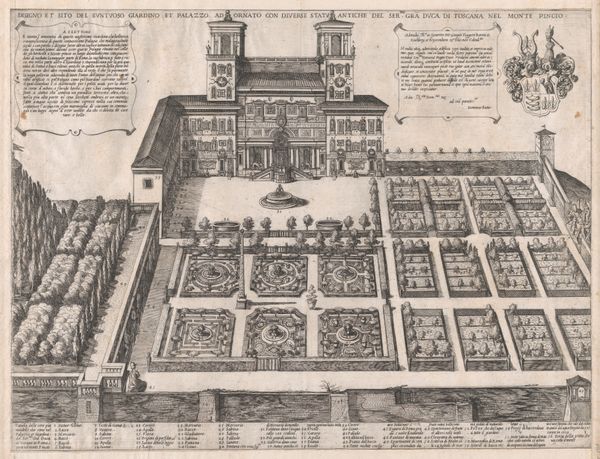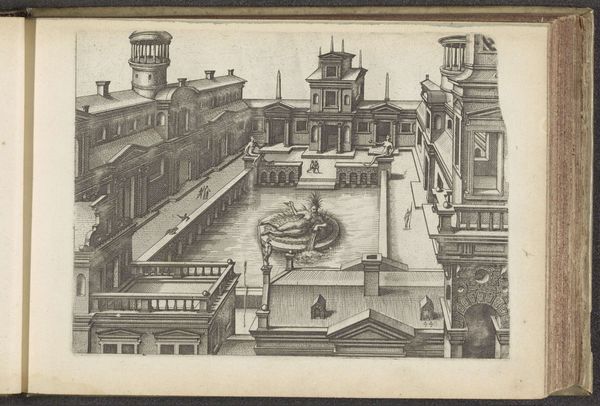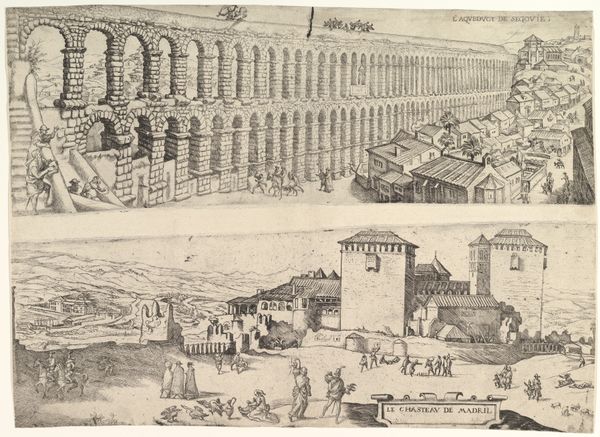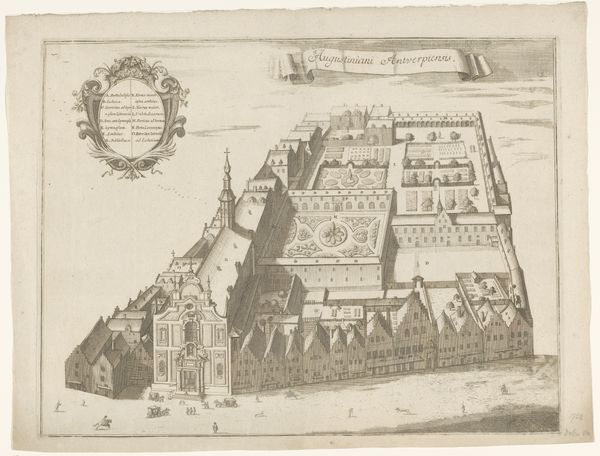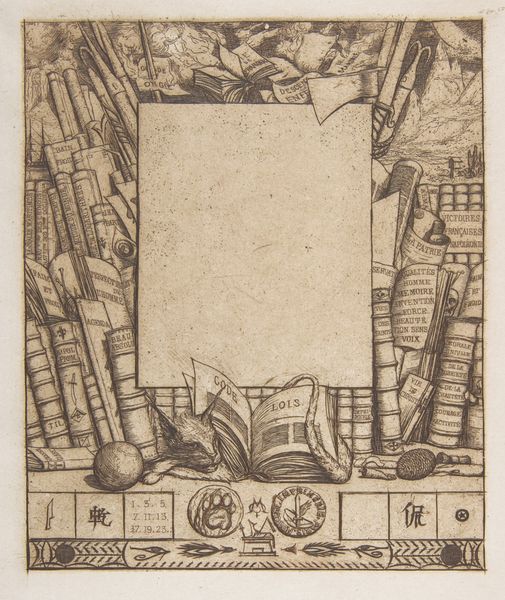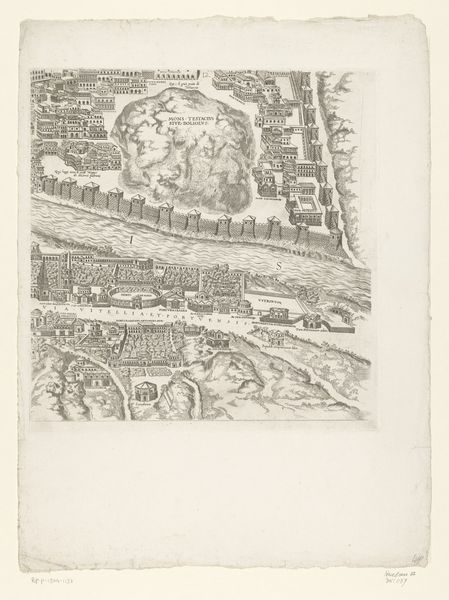
print, engraving, architecture
# print
#
geometric
#
line
#
cityscape
#
history-painting
#
engraving
#
architecture
Dimensions: height 405 mm, width 302 mm
Copyright: Rijks Museum: Open Domain
Curator: Looking at this engraving, I'm immediately struck by the artist's almost obsessive attention to detail. The precision of line, the meticulous depiction of architectural elements. Editor: Detail, yes, but also... detachment? It's like viewing a perfectly rendered dream of a place, not necessarily the place itself. The crispness and symmetry remind me of stage set blueprints, oddly… clinical, but beautiful. Curator: It's an aesthetic that very much reflects its time. This print, entitled "De Tempel Salomon / Die in Jerusalem ston," made sometime between 1725 and 1780, comes to us from the hand of Johannes (II) Kannewet. It's an engraving, offering a carefully structured vision. Look how the artist divides the space, separating the temple precinct from the broader cityscape, almost like two distinct planes of existence. Editor: The two zones do give it this ‘before-and-after’ feel, almost two separate concepts of Jerusalem competing. It feels deliberate. Maybe something to say about earthly versus heavenly Jerusalem? Curator: One could read it that way, particularly given the highly formalized treatment of space and the use of linear perspective, almost exaggeratedly so, which flattens depth and elevates the image to a symbolic representation rather than a naturalistic one. Editor: Absolutely. And the choice to render it all in such stark, almost industrial line work... It gives an impression of formidable structure but cold faith somehow, everything seems regimented. Where is the human emotion, where is feeling within this devotion? Curator: A valid critique. Kannewet’s emphasis does seem geared more toward illustrating an idealized concept, or architectural form rather than conveying lived experience. What it may lack in emotional warmth, it certainly compensates for in rigorous formal composition and masterful engraving. Editor: True, and the artistry definitely commands respect. I think this image has given me so much to consider not just what the temple was supposed to be, but about the role architecture has in defining faiths, beliefs and values over the centuries. Curator: A perfect encapsulation, I think. It also gives an incredible lens through which we can explore period techniques and methods.
Comments
No comments
Be the first to comment and join the conversation on the ultimate creative platform.

